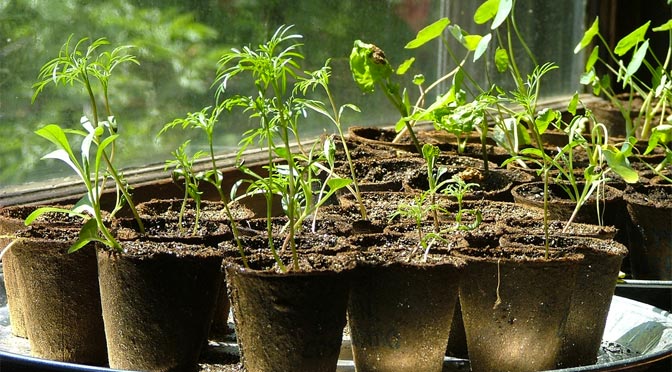Do you envision your garden to be a lush haven with an abundance of healthy plants and colorful flowers, with a constant show of hardy perennials and cheery annuals? Or do you see your dream garden filled with an abundance of vegetables and herbs, including some of the popular heirloom varieties of tomatoes, peppers or eggplant? Whatever your dreams and plans for your outdoor space, you can get started with a simple, fun and inexpensive method – grow your own!
Starting plants from seeds simply requires a little forethought and planning. You need to lay out a timetable, working back from the last expected frost date in your area. The individual seed packets you choose will give detailed instructions, including how many weeks ahead of the last frost to plant, planting depth, how long the seeds take to germinate and when the new shoots will be hardy enough to be planted outdoors.
Your local garden center or nursery is sure to carry a broad selection of seeds from reputable companies, as well as everything else you need to get going.
You will need:
Planting containers or trays with individual “cells” or cups to hold the planting medium and seeds, with something to cover them once planted. Some come with covers, or you can just use sheets of plastic.
Planting medium. Use a soiless planting mix. It should be sterilized, have good water retention and be lightweight enough for tender sprouts to push their way through the surface, all characteristics not found in average garden soil.
Seeds. Obtain the best seeds possible. The choices today are limitless and each year more and more organic and heirloom seeds are available.
Labels to identify the seeds in each tray. Strips of plastic written with permanent markers work well.
Water. The planting medium needs to stay moist – don’t overwater or allowing seeds to dry out. This is probably the most critical aspect of the germination process but can be learned easily with a little practice.
Light. Natural or artificial light is vital, but you needn’t have to rig up expensive grow lights. A bright south-facing window is perfect.
Warmth. Most seeds need a constant temperature of 65-70º F to properly germinate.
Be sure to follow the directions on the packet carefully, for each type of seed. Check on them each day to control moisture, light and temperature. Before long, you will experience the thrill of spotting the first signs of germination – tiny sprouts rising through the planting medium!
Once the seeds have germinated and the plants have started to leaf out, you can harden them off by taking them outdoors for a few hours each day. After four or five days getting acclimated in this manner, they can be planted in their rightful place and begin beautifying your garden! And you will have gained a new and rewarding skill. But watch out – pouring over those enticing seed catalogues can be addictive!

